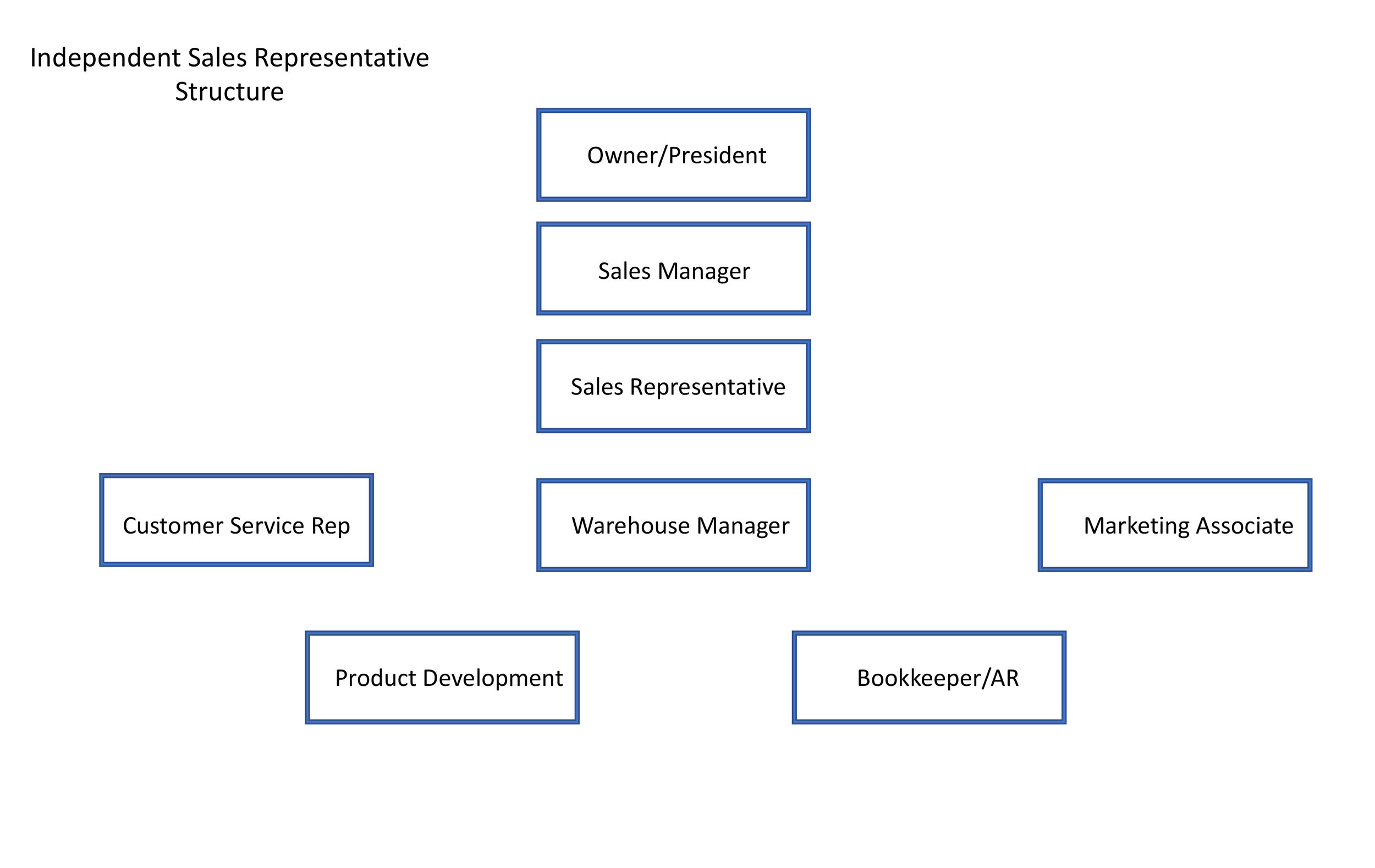eCommerce Sales Channel: How to Put the Right Team in Place
While there is plenty advice online about how to sell online there is precious little information on how to really do it. What do I mean by that? Let me explain.
The eCommerce Sales Channel is just another revenue avenue for your business. You should treat it just like you would your Inside Sales, Contract and Hospitality Sales, Key Account Chain Sales, Dollar Stores, Interior Designer Sales, Furniture stores, Big Box, Wal-Mart, Chain Drug Stores, DIY and Club Stores, so forth and so on the list goes on and on. Each of these existing channels has a plan and resources allocated to it which allows the accounts in this channel to perform at your expected revenue.
Now, granted this is a large company example but, the principles still apply. Each of the roles are aligned with the requirements of the customer to maximize sales. Selling Wal-Mart is very challenging. There is tremendous competition and beyond offering a great price, your execution must be flawless to sustain and grow your business. It is complicated and there are several moving parts and yet at the same time, the formula is pretty clear. It is a fact-based environment with analytics down to economic demographics and ethnic diversity in each store (Store of the Community). Yes, you need to support a vast array of product assortments and planograms and potentially unique packaging that is a deviation from the standard. Adding to the complexity is Wal-Mart does not hold inventory on most products and places weekly orders to meet the needs of their stores. These orders are often called “cross dock” which means the order is broken down and isolated at the store level so it hits the Wal-Mart DC’s and then sent to the specific store. They want fast turns and high ROI. This means the suppliers forecasting better be about perfect. As we all know out of stocks lead to product being removed from the shelf.
Each one of these team members plays a very important role to the overall management of the account. Take away the Business Analyst and your forecasting ability just went to hell in a hand-basket. Remove the Supply Chain Manager and those “cross dock” orders may end up at the ends of the Earth instead of the correct store. Remove the Team Leader and there is no one point person to co-ordinate it all. Finally, take away the President or VP Sales and you now lack company buy in and support. When you disassemble the National Account Team the revenue of the account is put in jeopardy. eCommerce accounts need the same careful focus and team approach in order to maximize sales whether it is a large company or a smaller one.
Let me give you another example, the company with a 1099 sales force. An independent sales rep needs exceptional support and sales tools. First, they need a product catalog, product specifications, pricing, volume pricing and samples. They need to be trained on the product and versed with the competition and why this product versus the competition. The sales reps also need case studies and success stories that relate to the customer type. The rep must have accurate stock information, order lead-times. Companies that thrive with with a 1099 sales force have a sale manager that is a servant leader. Below is a summary of all of the people who support the sales representative. Each role is critical to the overall success of the rep.
If any one of the these roles were to disappear the sales representative couldn’t do their job effectively or efficiently. No Warehouse Manager, no product shipped to the customer. No Marketing or Product Development teams, no product catalog or samples. No bookkeeper or finance department, no invoicing, no payments, no commissions. No sales manager no training or case studies, or front line of defense. Without all of the various support roles the sales territory and/or sales rep cannot produce the necessary results. eCommerce sales requires same level of support and teamwork that is required of a 1099 sales territory.
The eCommerce channel is officially a major retail segment generating Billions of dollars and the scary thing is, it is still in its infancy. It is the fastest growing retail segment and is gathering momentum at an epic clip. In 2017 the channel represented 13% of total retail sales in the US(Stastista). Consumers spent $453.46 billion on the web for retail purchases in 2017, a 16.0% increase compared with $390.99 billion in 2016. That’s the highest growth rate since 2011, when online sales grew 17.5% over 2010. You cannot afford not to play in the eComm space.
It is a brand-new eCommerce world. This world needs a dedicated approach. To excel in the eCommerce business, it requires complete organizational commitment. This is really no different than the other sales channels.
Let’s break down these roles and set up the company for success. To ensure buy-in, the eCommerce sales manager should report to the President or VP of Sales. It is the sales manager’s responsibility to work with each of the buyers within the eComm retailer. This can be complex especially if you sell in multiple categories. Not to mention each segment within a internet retailer. Then, the sales manager has to actually execute the sales plan and make sure all of the departments within the company are aligned.
The Purchasing Team must maintain inventory levels and replenishment. This is incredibly important and neccssary in order to to minimize out of stocks and to ensure that best sellers are always available. No product, no sales.
Next up, the Marketing Team. This group will drive SEO optimized copy, content and imagery. Do not underestimate the power of copy and content. Eighty-seven percent of internet shoppers rank copy and content as either important or very important. (ecomdash)
The Product Development team and Sales Manager are tasked with creating new products that catered to eCommerce channel. A good rule of thumb to follow. Just because an item is a top seller in the Brick and Mortar world doesn’t always mean an it will be your top eComm seller. Plan to differentiate your product assortment to ensure success.
The Operations team must get all orders out the door within 48 hours. And not just out the door but, this team makes certain the products leave the facility in drop-ship ready packaging. The last thing anyone wants is for the product to arrive damaged.
The Customer Service Team not only fields questions relating to product and tracking information. They must become experts with every customer portal. Process orders, invoice, update inventory, submit tickets to answer questions, change ship speeds, submit tickets to answer questions. Additionally, every single Internet Retailer has a different portal with different rules of engagement. The cross-functional relationships and communication are 100% necessary to the business as. When you have the right team management structure in place, you are in a position of strength to pro-actively manage the business and make the necessary adjustments as needed.
The larger companies have the budgets and resources to maintain this type of structure. But truthfully, they don’t always have the talent. It is not uncommon for this type of company to outsource its SEO and SKU optimization. They go to the experts.
What do you do if you are a $15M or smaller company. You certainly don’t have the resources to support an 8 person team. You find the experts. Take the same approach as the larger companies do for SEO and SKU optimization and expand it. I call it the Hybrid Method.
The Owner/President should be your point person that has top down support and buy-in and is supported with a few in house team members and the remaining players are 3rd Party resources. The Hybrid Model gives this size company the expertise that is required to help with all of the nuances of the eCommerce channel and the budget that works. The 3rd Party contract or 1099 folks can looks a few different ways but, this is the most common. An Independent Sales Rep firm who specializes in eCommerce can act as several functions: sales manager, semi-customer service (inventory uploads, customer portal management, product catalog management), SEO optimization, copy and content managers. Many smaller companies work with outside photographers or videographers for the necessary imagery or video requirements. The remainder of the customer service functions remain “in-house.”
There is also the a la carte method. In this model the company keeps all major roles in-house and creates projects to be handled by SEO/Content Marketing contractors or photographers. This can ensure the SKUs content is fully optimized and presented in the best way.
No matter how you look at it eCommerce is a very demanding sales channel. It requires expertise and strategic planning. It is the only sales platform that makes the product the sales rep and messenger all tied up in one. Your SKU has less than 30 seconds to convince the customer to add to cart. When done correctly eCommerce can be very profitable and has a great growth trajectory. Make sure you surround your company with the expertise it needs to thrive.






